One of the most famous structures ever built became legendary because it was poorly constructed. Right now, it’s one of the most popular tourist attractions in all of Italy.
In this post, You’ll discover the ultimate list of facts about the Leaning Tower of Pisa, one of the most iconic towers in the world!
1. The tower is part of a cathedral
The Leaning Tower of Pisa is the bell tower, also referred to as a “campanile,” of the cathedral of the Italian city of Pisa, in the Tuscany region of central Italy.
It’s a free-standing bell tower which means it’s not directly connected to the cathedral of Pisa.

2. It’s located in a large walled complex
The Leaning Tower of Pisa and its cathedral are located in a large 8.87-hectare walled complex called the “Piazza dei Miracoli,” which is also sometimes referred to as the “Piazza del Duomo” (Cathedral Square).
This complex has been referred to as one of the most important areas of medieval art, and one of the finest architectural complexes in the world.

3. Building it took a grand total of 199 years
Construction of the tower started in the year 1173 but wasn’t completed until the year 1372. Granted, the construction of the tower was halted multiple times and actually happened in 3 stages.
- The first stage started in 1173 but was halted for a century because of ongoing conflicts between Pisa and Genoa, Lucca, and Florence.
- The second phase started in 1272 but was halted again in 1284 because the Republic of Pisa was defeated by the Genoans in the Battle of Meloria.
- Even though the 7th and final floor of the tower was completed in 1319, it wasn’t until the year 1372 that the bell-chamber was finally added which marked the completion of the tower.
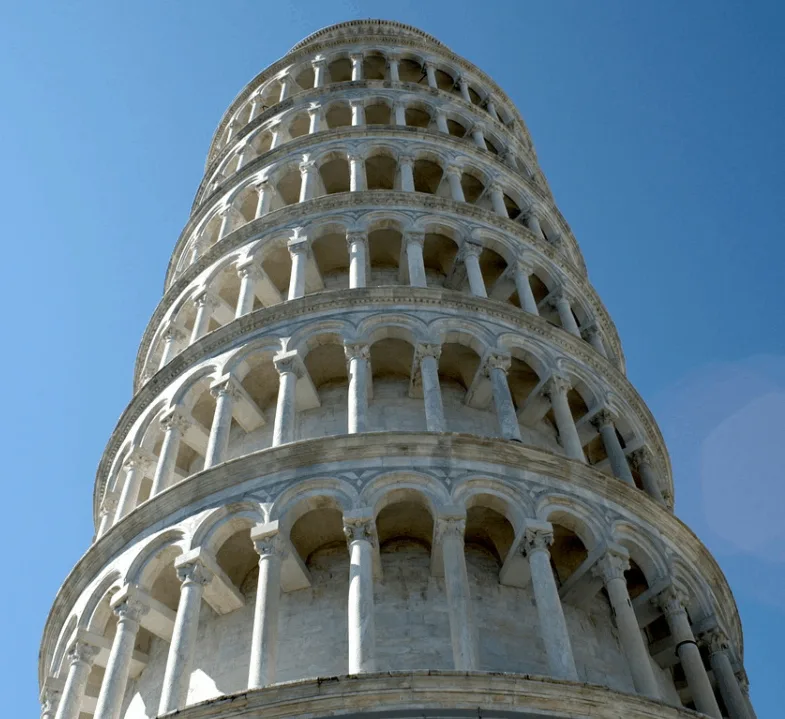
4. That’s what you call being off to a bad start
First of all, the foundations of the tower were only 3 meters deep, which was a design that was flawed from the start.
One of the most remarkable facts about the Leaning Tower of Pisa is that the name of the city is derived from a Greek word that means “Marshy Sands.”

This kind of gives a clue as to why the tower started tilting the moment construction reached the second floor in 1178.

5. Halting the construction was a blessing in disguise
Even though there were many bloody wars during the period that the construction of the tower was halted, it was actually a blessing.
Because the construction didn’t continue, the soil underneath the foundation was able to settle.
Modern research has shown that, if construction had continued, there would have been no Leaning Tower of Pisa for people to visit, but ruins of a Toppled Tower of Pisa.
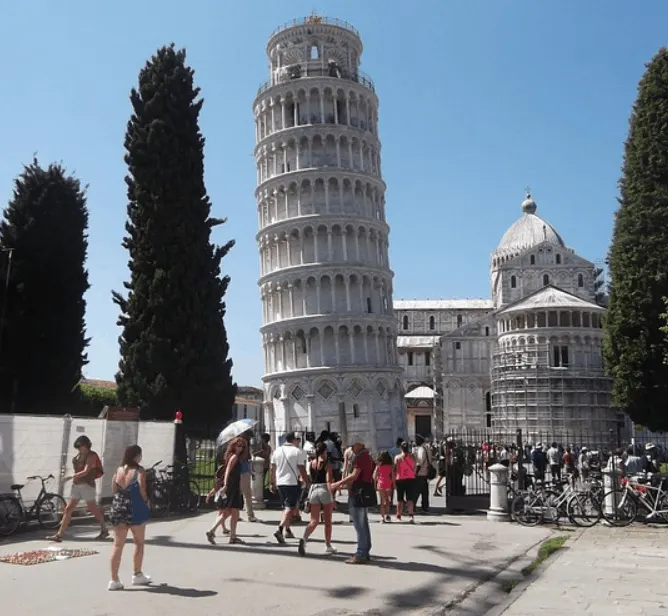
6. A widow financed the first stones
A widow named Donna Berta di Bernardo and who was a resident of the house of dell’ Opera di Santa Maria, left 60 soldi, a nearly pure gold coin issued in the Late Roman Empire, to be used for the construction of a tower.
These coins were used to purchase the first stones and start the construction of the bell tower.
Interesting fact: the stones that were bought using the soldi bequeathed by Donna Berta di Bernardo still form the base of the Leaning Tower of Pisa today.

7. The original thought behind its construction was much less noble
The Middle Ages was a time of never-ending wars in the Pisa region. On top of that, pirate-like behavior of invading more distant territories to plunder was rampant.
One of these “excursions” proved to be very successful. The Pisans successfully sacked Palermo in Sicily in the year 1063 and brought home a lot of booty.
The city government and Catholic Church were so pleased with this that they decided to create the “Piazza dei Miracoli,” or “Miracle Square,” to have a place to display the treasures that the heroes brought home, and which would eventually house the Leaning Tower of Pisa.
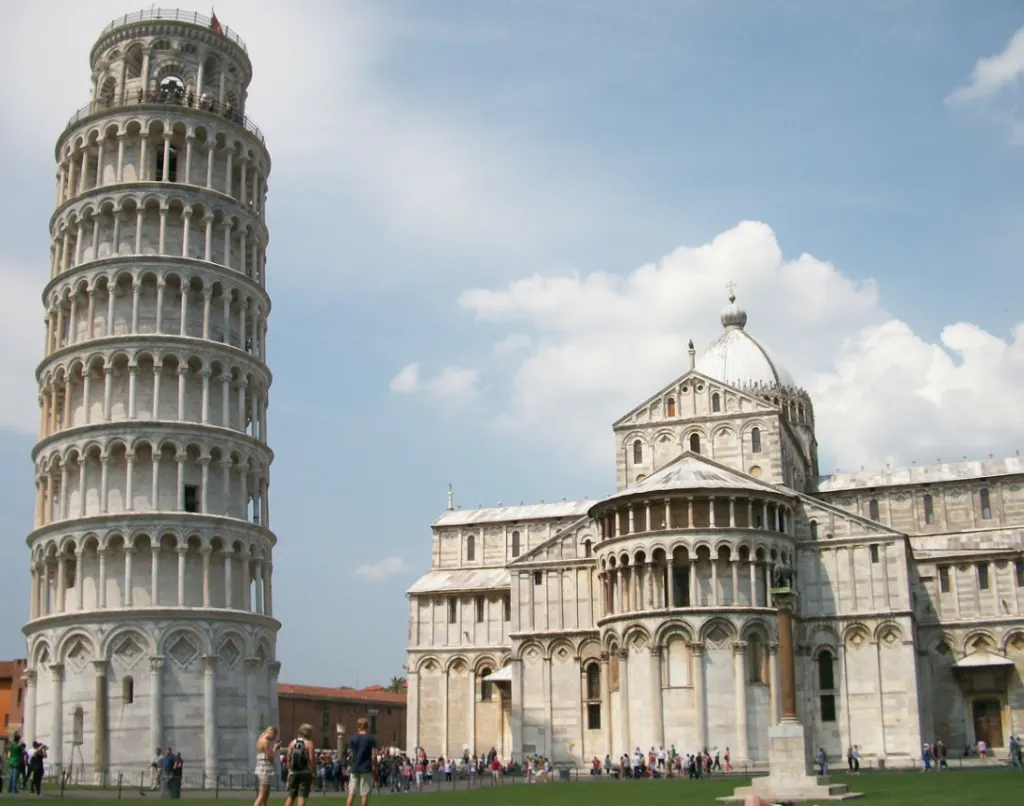
8. The two mistakes were pretty obvious
They didn’t even reach the third floor yet when the tower started tilting towards the north. The reasons were pretty obvious:
- The foundation wasn’t deep enough – a 3-meter deep foundation would never be enough to sustain such a tall and heavy building.
- It was built on bad soil – The ground that the tower is built in consists mainly of clay, which is clearly not solid enough to hold the building.
But let’s look at the bright side, the soil is very suited for growing grass, which allows tourists to have a picnic in the park on a nice summer day.
Good times!
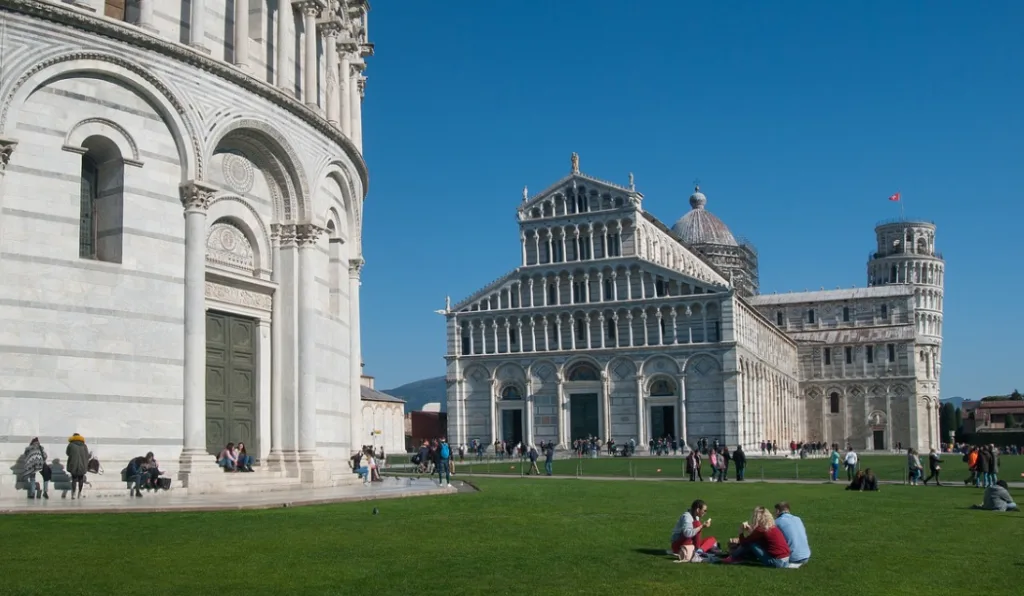
9. Who was the architect of the Leaning Tower of Pisa?
According to Italian historian Giorgio Vasari, the architect of the Leaning Tower of Pisa was Bonanno Pisano. A piece of cast bearing his name was also discovered at the foot of the tower in 1820.
This is however believed to be from the bronze Porta Reale of the cathedral of Pisa, which was destroyed in a fire in the year 1595.
A more recent study has indicated that Diotisalvi was the original architect of the tower, an Italian architect who is known to be the original architect of the baptistry of Pisa in the same complex.
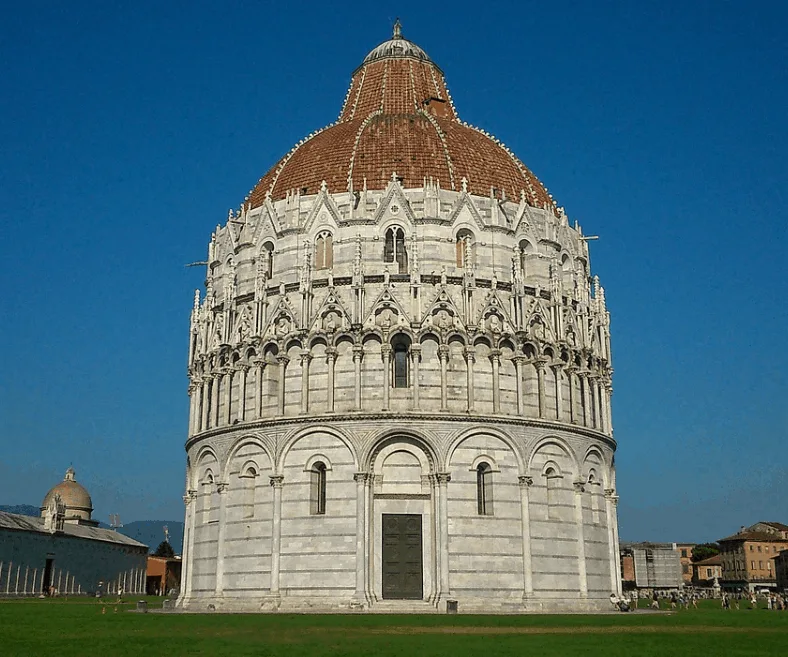
10. They tried to solve the issue but didn’t succeed
When the second phase of construction started in the 1270s, the new engineers tried to solve the tilt of the tower by building one side of the upper floors taller than the other.
While this didn’t solve the main issue of the tower tilting to the north, it explains why the tower is curved.
11. The original tilt multiplied by 5 and beyond
The original tilt when the construction reached the second floor was about 0.2 degrees. When they continued however about a century later, things started to deteriorate much faster.
Building taller floors on one side didn’t work, as the original tilt of 0.2 degrees had increased to about 1 degree when construction was halted yet again.
What’s even more interesting is that the tilting had worsened even during the construction break. By the time the bell tower was being integrated in the early 1370s, the tilt had increased to 1.6 degrees.

12. The tilt reached a crucial point in the 1990s
If it was up to the computer model that analyzed the tilt of the Leaning Tower of Pisa, it should have toppled the moment it reached a tilt of 5.44 degrees.
By 1990, the tilt had reached a crucial 5.5 degrees and the seventh floor was overhanging the ground by 4.5 meters (15 feet).
13. Taking action was urgently needed
British engineer John Burland, who was leading the project of stabilizing the project, said that he had no idea why the tower didn’t topple yet because all models clearly showed this should have happened long before.
This kinda emphasizes how critical the situation at that time really was.

14. How did they solve the problem?
They eventually managed to solve the problem by hanging lead weights at one end of the tower, and carefully drilling the soil below it.
This didn’t happen overnight though, as the project was started in 1990 and the Leaning Tower of Pisa was only opened to the public again on December 15, 2001.
15. The tilt was only reduced by 10 percent
In the decade of ongoing stabilization efforts, about 70 metric tons of soil had been removed from below the Leaning Tower of Pisa, which stopped the tower from moving completely since 2008.
What’s really interesting is that this not only reduced the tilt by 10% but that it could be moved a lot more if needed with the special and groundbreaking techniques that were used.
So why didn’t they completely straighten the tower?
Because they feared a lot of people would be angry if the “Leaning Tower of Pisa” suddenly became merely the “Tower of Pisa.”

16. The tower won’t stop moving forever
But you don’t have to worry, the Leaning Tower of Pisa won’t be closed to the public in our lifetime.
It’s estimated that the recent stabilization efforts will add about 200 years to the life of the tower unless external elements decide otherwise of course.
17. Will the tower topple in 200 years?
So the engineers that took care of stabilizing the Leaning Tower of Pisa mentioned this will add another 200 years of life to the tower.
Does this mean it will topple in 200 years?
No. This simply means that the ground they stabilized will start to give way again, and the process of the tower slightly tilting further year in and year out will recontinue.
Obviously, they can perform the same stabilizing techniques yet again, which will most definitely be even more advanced in the early 23rd century.

18. The tower could have been decimated in WW II
During World War II, the Germans thought the tower would be the perfect lookout spot, so they decided to use it this way.
When WW II drew to a close and the Americans were advancing on Pisa, the Germans that still held the city fled to the military base that the tower had become.
It would have taken just 6 words for the tower to be blown to bits with the Germans in it, but the beauty of the tower was too overwhelming for an American soldier to utter this command.
That’s the only reason we can still enjoy its beauty today.
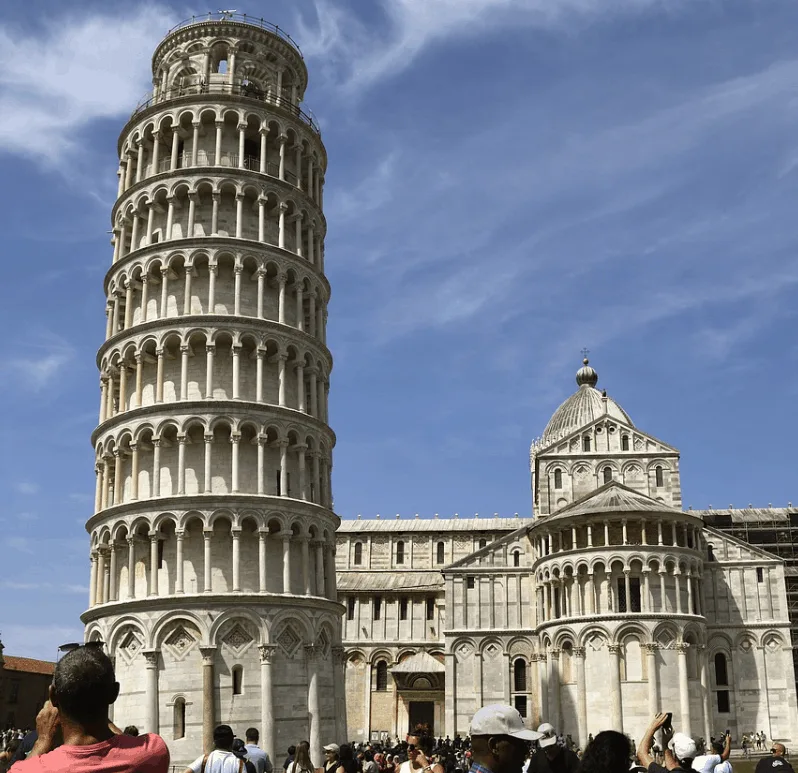
19. The tower isn’t the only leaning structure in Pisa
The soil in Pisa isn’t good enough to sustain heavy buildings if the foundations aren’t adjusted for this fact.
Unfortunately, in the 12th century, engineers simply didn’t have much reference and knowledge regarding this matter.
This means other buildings in Pisa suffer the same fate, including the bell tower of the Church of St. Nicola called the “Borgo Stretto,” and the “San Michele Degli Scalzi” church, which tilt is around 5 degrees at the moment.
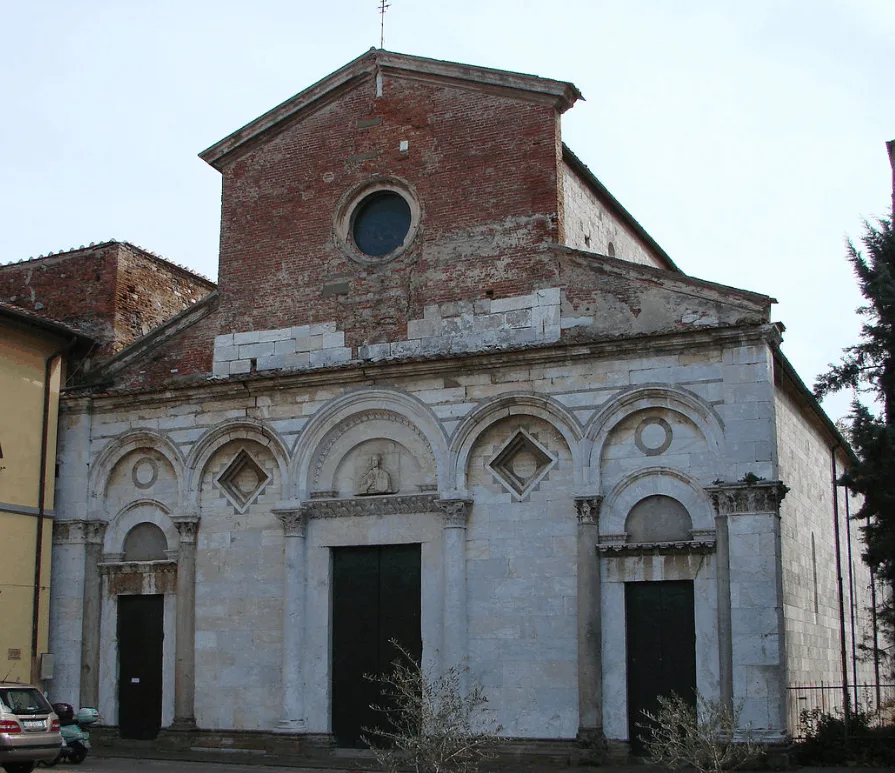
20. Pisa isn’t the only place with bad soil
Germany is also home to some of the most leaning buildings in the world. This includes the 15th-century square Leaning Tower of Suurhusen and the 14th-century bell tower in the town of Bad Frankenhausen.
Especially the Leaning Tower of Surrhusen, with a tilt of 4.99 degrees, comes very close to the extreme tilt the Leaning Tower of Pisa once had before the stabilization efforts reduced it to about 3.97 degrees.
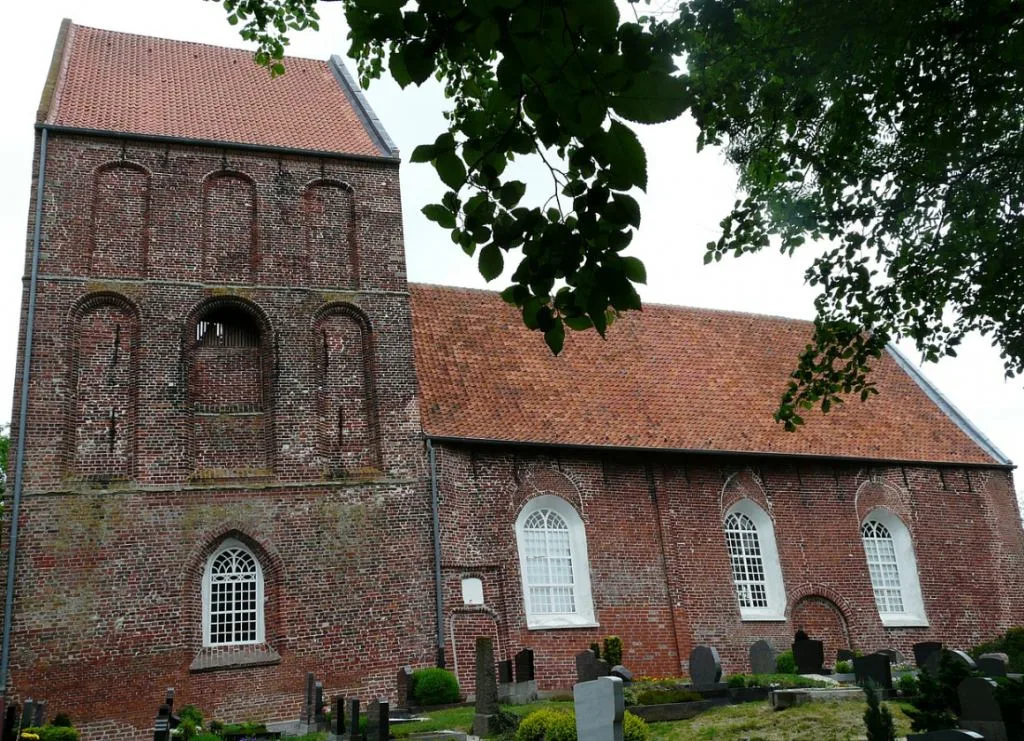
21. The Guinness World Record goes to UAE
None of the other leaning towers is included in the Guinness World Record Book anymore (even though the German Tower and the Leaning Tower of Pisa once were).
The Capital Gate Tower in Abu Dhabi also referred to as “the Leaning Tower of Abu Dhabi,” currently holds the record with a tilt of 18 degrees.
Obviously, serious engineering work artificially made this happen, not the soil it was built on, so we should take this record with a grain of sand (pun intended).
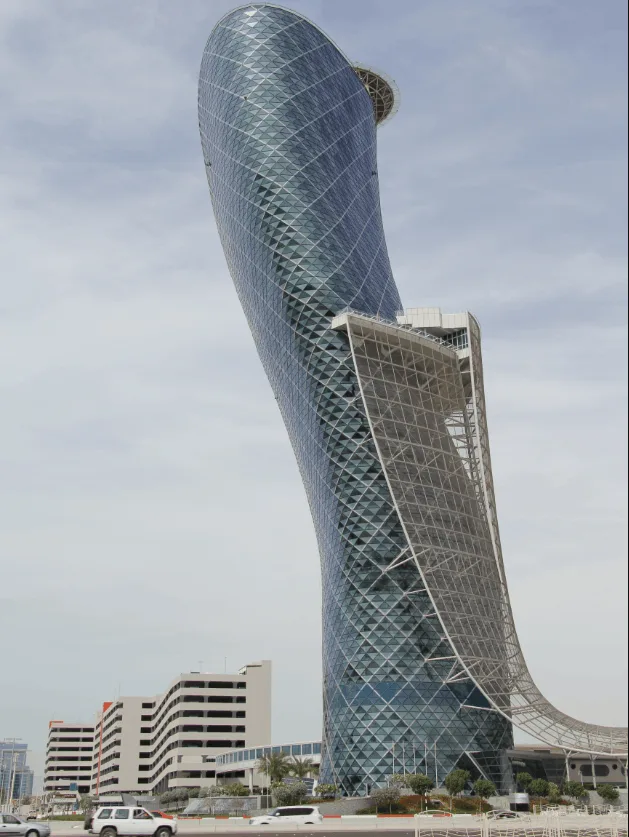
22. Efforts by Mussolini had the opposite effect
Italian Dictator Benito Mussolini didn’t appreciate the beauty of the tilted tower and wanted to straighten things out.
His engineers drilled a total of 361 holes into the masonry foundation which they subsequently filled with grout and mortar.
The result was that the tower started tilting even more than before because of the heavy cement.
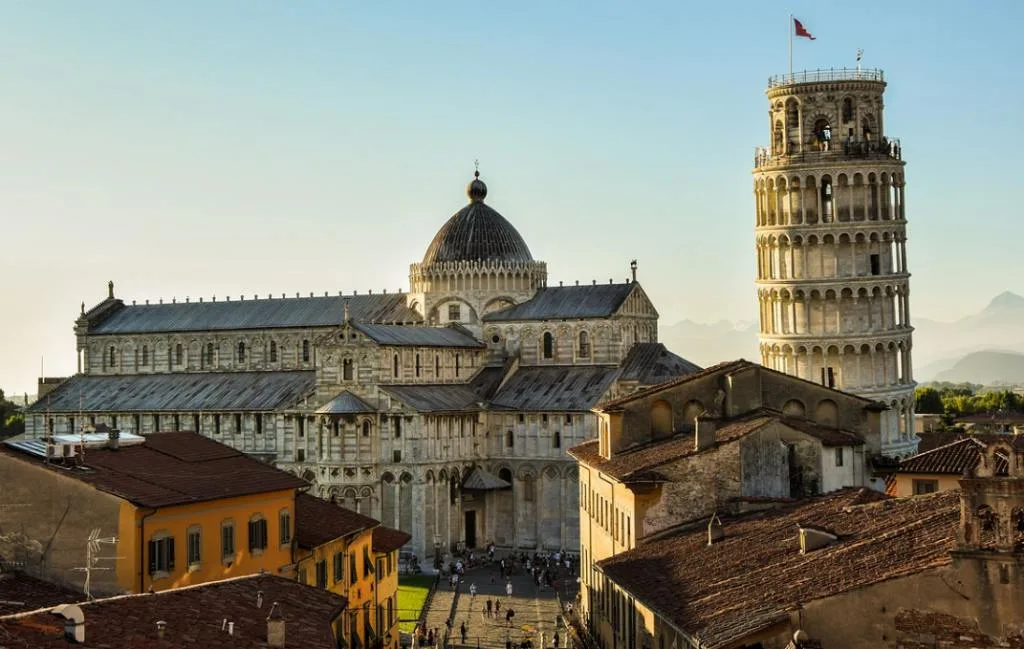
23. The weak soil it was built on actually saved it 4 times
One would assume that one of the four severe earthquakes that struck the region since the Middle Ages would have resulted in the flattening of the Leaning Tower of Pisa. After all, its tilt makes it look pretty vulnerable.
So why didn’t this happen?
16 engineers, including a leading expert in earthquake engineering and soil-structure interaction from the University of Bristol, have solved the mystery.
The main reason is that the soft soil it’s built on ensures that the tower doesn’t resonate with earthquake ground motion.
This means that the reason it’s tilting is actually the reason it still stands. Pretty ironic don’t you think?

More interesting facts about the Leaning Tower of Pisa
24. The height of the tower is different on both sides due to its tilt. The height of the tower is 55.86 meters (183.27 feet) from the ground on the low side and 56.67 meters (185.93 feet) on the high side.
25. The total weight of the Leaning Tower of Pisa is estimated to be about 14,500 metric tonnes or 16,000 short tonnes.
26. The maximum tilt of the tower was 5.5 degrees but has been reduced during the stabilization efforts to 3.97 degrees, which is barely noticeable to the naked eye.
27. The total length of the overhanging part of the tower is 3.9 meters (12 ft 10 in).
28. The outer diameter of the base is 15.484 meters (50 ft 9.6 in) and the inner diameter of the base is 7.368 meters (24 ft 2.1 in). This means the thickness of the walls at the base is 2.44 meters (8 ft 0 in).
29. The Leaning Tower of Pisa has 7 bells in its bell chamber. The last bell called L’Assunta is the biggest and was cast in the year 1654 and weighs a whopping 3,620 kg (7,981 lb)!
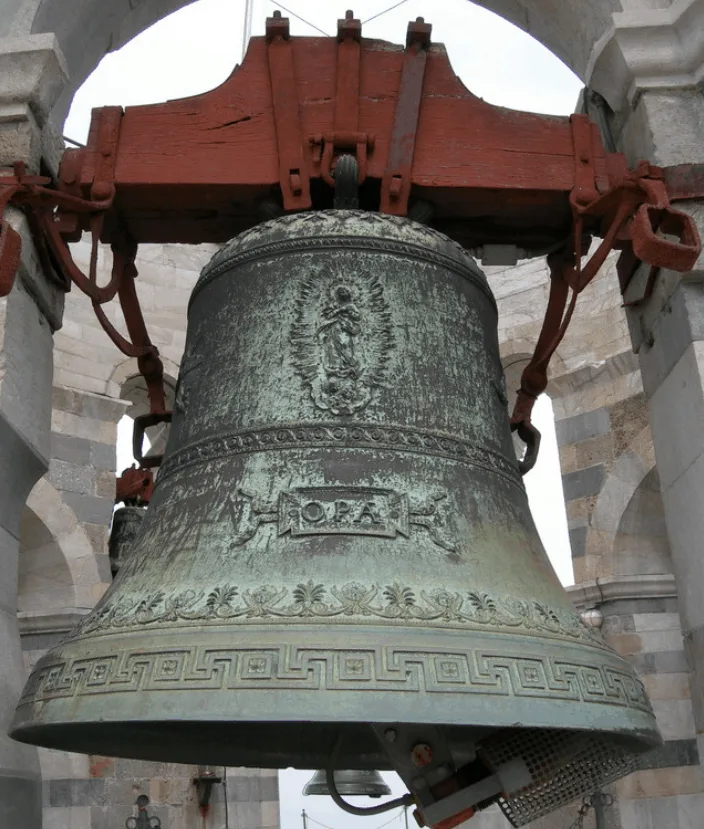
30. The Leaning Tower of Pisa is one of the most popular tourist attractions in all of Italy, as it welcomes over a million tourists every year.
31. Since 1987, The Leaning Tower of Pisa, together with all other buildings in the Piazza dei Miracoli, has been added to the UNESCO world heritage list.
32. Feel like doing some exercise? There are a total of 296 steps that will keep you busy for a while. If you want to get there faster then you better go via the north side because there you only need to climb 294 steps.

33. Is it worth climbing to the top? Most definitely! You don’t have to fear that the tower will topple any moment and from the top, you can catch some amazing views!

